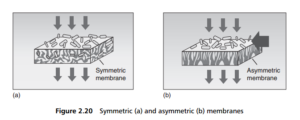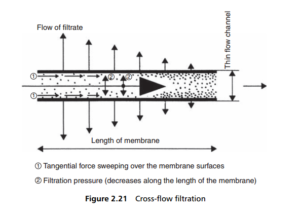0
-
An empty cart
You have no item in your shopping cart
envato-wordpress-toolkit domain was triggered too early. This is usually an indicator for some code in the plugin or theme running too early. Translations should be loaded at the init action or later. Please see Debugging in WordPress for more information. (This message was added in version 6.7.0.) in /var/www/wp-includes/functions.php on line 6121g5plus-darna domain was triggered too early. This is usually an indicator for some code in the plugin or theme running too early. Translations should be loaded at the init action or later. Please see Debugging in WordPress for more information. (This message was added in version 6.7.0.) in /var/www/wp-includes/functions.php on line 6121As the term is applied nowadays, membranes can be porous or non-porous, polymeric or inorganic. They can be used for a range of separations including solids from liquids, liquids from liquids, and gases from gases, but in particular it is the
filtration of micrometre and sub-micrometre size particles from liquids and gases where membranes have proved their worth in the filtration business.
Over recent years, membrane technology has been carried into many industrial sectors, including the chemical, petrochemical, food and beverage processing, pharmaceuticals, electronics, biotechnology and especially the treatment of water. In basic terms, there are three broad types of membrane material:
● the modified natural products based on cellulose
● the synthetic polymer materials, such as polyolefins, polyesters, fluoropolymers, and
● the generally inorganic materials, such as ceramics.
There is also the developing field of dynamic and liquid membranes.
To be effective in filtration and related separation processes, membranes must be chemically resistant to both the feed and cleaning fluids, they must be mechanically and thermally stable, they should have high permeability whether for particles or ions or molecules as appropriate, they should be highly selective, they should be stable in operation for prolonged periods, and they should be strong enough to resist the high transmembrane pressures necessary for some membrane processes.
When particle separation through a membrane is being considered, the size of the hole through which the particle is going to move, or by which it is to be retained, becomes one of the important characteristics. A membrane with pores in the region
of 0.005–1 um in diameter would be called a porous membrane. With pores smaller than this, say 0.001–0.005 um (1–5 um) in diameter, this will be called a microporous membrane. Holes of 1nm or less cannot be regarded as true pores but merely
spaces that open up between molecules of the membrane material, produced by the random movement of these molecules, so that a diffusion process rather than particle movement is the process that is characteristic here, and such a membrane will
be called non-porous, or semi-permeable.
A membrane that has the same chemical and physical structure throughout its thickness in the direction of travel of the separating species is called a symmetric or isotropic membrane. If it has a different chemical and physical structure in the
direction of its thickness it is called an asymmetric or anisotropic membrane (see Figure 2.20). The most common form of asymmetric membrane has a very thin skin of highly selective material, supported on a much thicker substrate, usually
made from the same material, but quite possibly of different materials. If the materials are the same, then the asymmetric structure is usually created in one piece with the thin active skin.

A key feature of membrane processes is the ease with which the surface of the membrane becomes blocked with very fine, slimy material. This is called fouling and membranes systems are usually designed with very great care such that the
fouling process is minimized as far as possible. The actual membrane surface can be chemically modified to decrease the tendency to foul.
A major development in filtration, which came with the first, reverse osmosis membrane process, was the fact that the flow of the fluid at the membrane surface is tangential to it, rather than perpendicular to that surface. This has become known
as cross-flow fi ltration (see Figure 2.21), and almost all membrane processes now operate in crossflow rather than through flow mode. Further scouring action is achieved by having the membrane medium move relative to the liquid flow, either
rotating close to a stator, or vibrating.
A major development in filtration, which came with the first, reverse osmosis membrane process, was the fact that the flow of the fluid at the membrane surface is tangential to it, rather than perpendicular to that surface. This has become known
as cross-flow fi ltration (see Figure 2.21), and almost all membrane processes now operate in crossflow rather than through flow mode. Further scouring action is achieved by having the membrane medium move relative to the liquid flow, either
rotating close to a stator, or vibrating.

For further information, please click here.